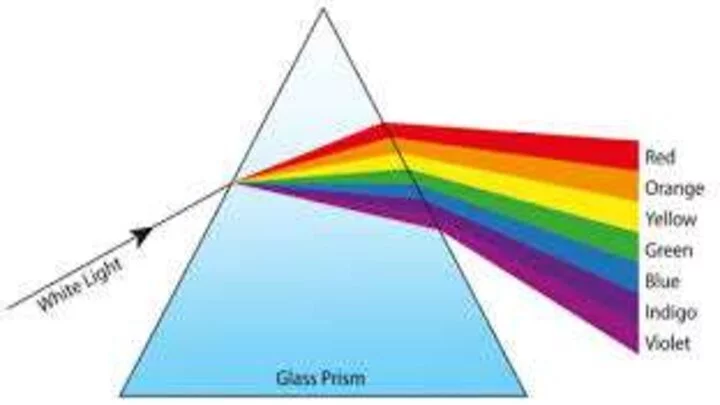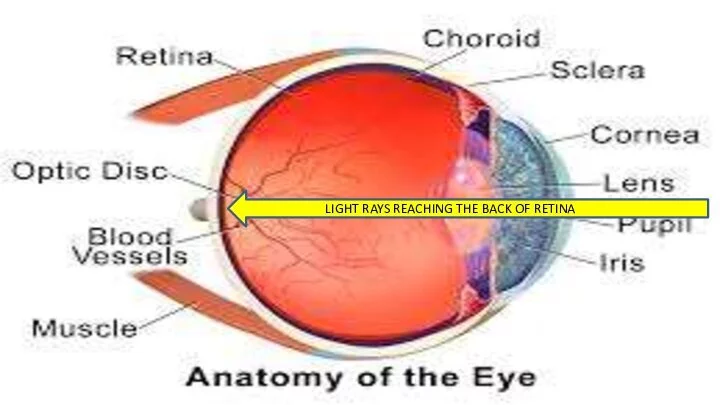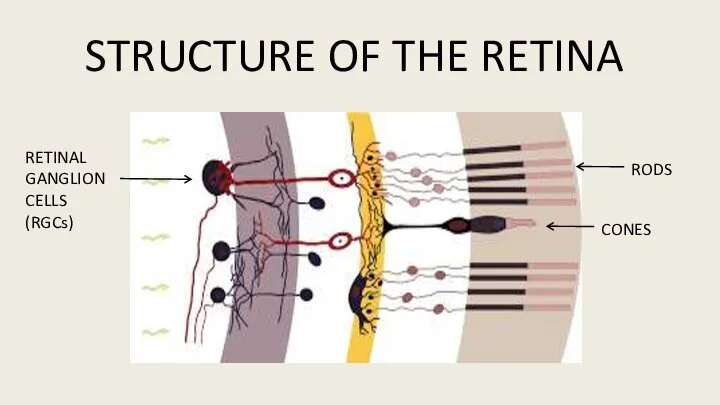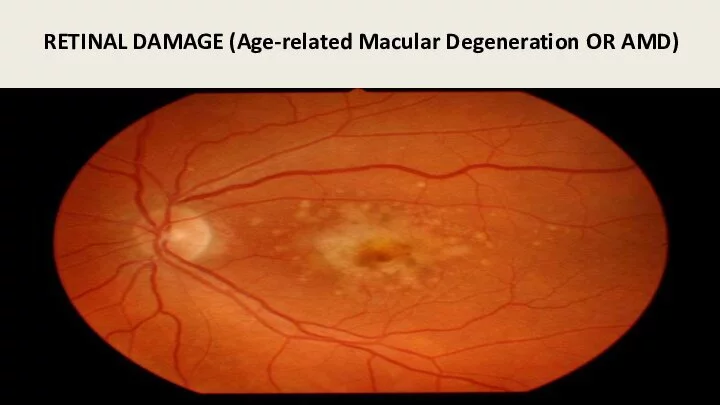For watching the video version of this article, click on the video below.
What is blue light?
What are the sources of blue light?
How does blue light act on the eyes?
How does blue light affect the circadian rhythm (body’s internal sleep-wake cycle)?
Does blue light cause eye, or more specifically, retinal damage (Age-Related Macular Degeneration or AMD), leading to blindness?
Can other monochromatic lights like green and red light have harmful effects on the body?
What can be done to reduce the harmful effects of blue light?
Why do elderly people feel sleepy during the day?
What are the health benefits of blue light?
What is blue light?
The visible light spectrum is made up of a combination of lights of various colors. Violet is at one end of the spectrum, and red is at the other. In between these two, are lights like indigo, blue, green, yellow, and orange. However, of special importance is the blue light. This is because our body has special cells in the eye called intrinsically photosensitive Retinal Ganglion Cells (ipRGCs) that are particularly sensitive to blue light.

What are the sources of blue light?
The largest source is the sunlight. However, other important sources of blue light are screens of digital devices containing Light-Emitting Diodes (LEDs). These include Liquid Crystalline Display (LCD) and Light-Emitting Diodes (LED) televisions (TVs), computers and laptops, tablets, e-readers, and smartphones. It is also emitted from LED bulbs and compact fluorescent lamps (CFLs) used in general illumination.

How does blue light act on the eyes?
The human eye has three layers, namely the sclera (which is the outermost), choroid (in the middle), and retina (which is the innermost). The sclera is transparent in its front portion, and this portion is called the cornea. Light rays pass through the cornea and the lens to reach the back of the retina.

The retina has primarily three types of cells. These are the rods, cones, and retinal ganglion cells. The rods and cones are important for image-formation, and the world we see around us is due to these two types of cells. A small proportion of the retinal ganglion cells are the intrinsically photosensitive Retinal Ganglion Cells (ipRGCs). These cells are important for non-image-forming photoreception. This means that they are not involved in image formation, but have some other biological functions. Apart from other biological functions, this non-image photoreception is most importantly responsible for synchronizing the circadian rhythm (also known as the body’s internal sleep-wake cycle) to the 24-hour solar day-night cycle.

How does blue light affect the circadian rhythm (body’s internal sleep-wake cycle)?
Intrinsically photosensitive Retinal Ganglion Cells (ipRGCs) of the retina, through a circuit in the brain, regulate the secretion of a hormone called melatonin by the pineal gland. The pineal gland is a small endocrine gland located in the brain. In general, endocrine glands secrete substances called hormones, and these hormones travel through the blood and exert their action on cells located at distant sites.
Stimulation of the ipRGCs by light inhibits melatonin secretion, and its non-stimulation increases melatonin secretion. Thus, melatonin secretion is inhibited during the day. Thereafter, as the intensity of the light starts decreasing in the evening, the level of melatonin starts rising. Melatonin level starts rising in the evening at around 8 pm, peaks at around 2 am in the night, and starts declining thereafter to reach baseline levels around 8 am of the next day. Melatonin is an important hormone responsible for many functions, but the most important function of melatonin is the induction of sleep. This it does by modulating several body functions like lowering the heart rate and the body temperature.
Effects of sleep deprivation on health
Sleep has an important restorative role and aids in the healing and repair of the body. Lack of adequate sleep can result in heart disease, diabetes, obesity, cancer, Alzheimer’s disease, impaired immunity and reproduction, and gastrointestinal disturbances. Sleep deprivation can cause impaired learning, judgment, memory, and increased reaction time. Sleep is very important for proper growth in children. Poor quality and quantity of sleep also make a person irritable, and sleep deprivation has been linked to Attention Deficit Hyperactivity Disorder (ADHD) in children.

Does blue light cause eye, or more specifically, retinal damage (Age-Related Macular Degeneration or AMD), leading to blindness?
Effects of blue light on the retina can be either due to short-term high-intensity exposure or long-term low-intensity exposure.
Studies have conclusively shown that even short-term high-intensity blue light (both artificial and sunlight) can damage the retina in humans and animals. However, the case is not so straightforward for long-term low-intensity exposure. Studies carried out on animals have conclusively shown that long-term low-intensity exposure damages the retina. However, very few long-term studies spanning months to years have been carried out on humans to ascertain the effects of long-term low-intensity exposure on the retina. As very few long-term studies have been carried out on humans, the possibility of retinal damage due to blue light cannot be ruled out.

Can other monochromatic lights like green and red light have harmful effects on the body?
Yes. Even monochromatic lights like green and red can disrupt the circadian rhythm. However, the intensity of their effect is far less compared to blue light, and the effects are of a shorter duration.
What can be done to reduce the harmful effects of blue light?
- Having a diet containing anti-oxidants. Anti-oxidants reduce retinal damage due to reactive oxygen species (ROSs) produced in the retina by blue light. Vegetables, fruits, whole grains, legumes, nuts, and seeds are rich in anti-oxidants. Many vitamins and minerals also have anti-oxidant properties.
- Using blue light filtering lenses. These lenses can be inserted inside the eye during cataract surgery, or used in the form of spectacles or glasses. Glasses are more commonly used. To check the comparison of the top 10 blue light blocking glasses available on Amazon, click here.
- Reducing the intensity of illumination on digital devices like mobiles and laptops. This reduces the intensity of all lights, including that of blue light. On the other hand, too little illumination can result in eyestrain. The illumination on the device should be balanced in such a way that it reduces light exposure, but does not cause eyestrain.
- Using dark themes on smart phones. This also reduces the overall light entering the eye.
- Using night-mode on electronic devices like smartphones and computers, if it is provided by the manufacturer. Newer devices have this option. If the night-mode option is not available on the device, night-mode apps can be installed and used.
- Avoid using gadgets like televisions, computers, laptops, tablets, e-readers, smartphones, and video games in the evening. Besides, reducing room illumination of LED bulbs in the evening will help in improving the quality of sleep during the night.
Why do elderly people feel sleepy during the day?
As people become older, the lens becomes progressively less transparent. Thus, the transmission of blue light through the lens gradually decreases over time. Thus, in the elderly population, even during the day, sufficient blue light is not able to pass through the lens to reach the retina and stimulate the ipRGCs. This results in increased melatonin secretion during the day, and consequently, in daytime sleepiness. Thus, elderly patients experience better sleep quality after the opacified lens is removed during cataract surgery, and replaced by a new one.
What are the health benefits of blue light?
Light is responsible for increased alertness during the day. Light also improves memory and mood. This is the reason why we feel livelier on a bright sunny day. Bright-light illumination increases alertness and thereby improves the performance of tasks. It can thus play a role in improving the functioning of patients with dementia (including Alzheimer’s disease), who primarily have impaired everyday functioning due to impaired memory. Bright-light illumination can also help in improving learning in students. Bright light therapy can be used in the treatment of various psychiatric conditions with depressed mood like premenstrual syndrome, seasonal affective disorder (SAD), and depression. Blue light therapy can also help in synchronizing sleep in night-shift workers, people working in the aviation industry frequently experiencing jet lag, and in treating patients with sleep disorders.
Although digital devices emit blue light, which can disrupt sleep and has the potential for eye damage, they can also cause a condition called ‘digital eye strain’ or ‘computer vision syndrome’. To read a detailed article on digital eye strain/computer vision syndrome, click here.
If you found the information in this article useful and would like to receive updates on health-related articles in the future, consider subscribing by providing your e-mail.
Summary
Blue light is a part of the visible light spectrum. Sources of blue light include the sun and LED containing electronic and digital devices and bulbs. Blue light stimulates the intrinsically photosensitive Retinal Ganglion Cells (ipRGCs) situated in the retina (innermost layer of the eye). This causes the inhibition of melatonin secretion by the pineal gland (an endocrine gland situated in the brain). Melatonin is responsible for sleep, among other functions. This is how blue light inhibits melatonin secretion, and consequently disrupts sleep. In current times, widespread and excessive use of digital devices has contributed to sleep problems, and consequently, other harmful health effects. Blue light can also cause retinal damage in the eye (known as Age-related Macular Degeneration or AMD). Although currently there is no evidence to show that low-intensity long-duration exposure causes retinal damage in humans, there is enough evidence that low-intensity long-duration exposure causes retinal damage in animals. Hence, it is better to take precautions. Blue light effects can be reduced by taking a diet rich in anti-oxidants, using blue light filtering glasses, reducing illumination on digital devices, using dark themes, using night-mode or night-mode apps, and minimizing the use of digital devices to the bare minimum. Blue light is also responsible for daytime sleepiness in the elderly. Finally, blue light is not always bad. It increases alertness, improves memory and mood, and can help in synchronizing sleep in night-shift workers, people working in the aviation industry, and patients with sleep disorders.
References:
- Gianluca Tosini, et al., Effects of blue light on the circadian system and eye physiology. 2016.
- Siegfried Wah, Moritz Engelhardt, Patrick Schaupp, Christian Lappe, Iliya V, Ivanov. The inner clock—Blue light sets the human rhythm. 2019
- Lisa A Ostrin. Ocular and systemic melatonin and the influence of light exposure. 2019.
Attributions for images used in this article:
Light through prism. Meganbeckett27 / CC BY-SA (https://creativecommons.org/licenses/by-sa/3.0)
Disclaimer:
The information on this website is strictly for educational purposes only. This information is not a substitute for professional medical advice, diagnosis, and treatment. Always consult a qualified medical professional for any advice regarding a medical condition. Do not disregard any professional medical advice or delay in seeking medical help because of any content on this website. Although every effort is made to provide the latest, accurate, and comprehensive information in this content, the author does not take any liability for any damage arising from any use of this content. The content is provided as-is and without any warranties.
